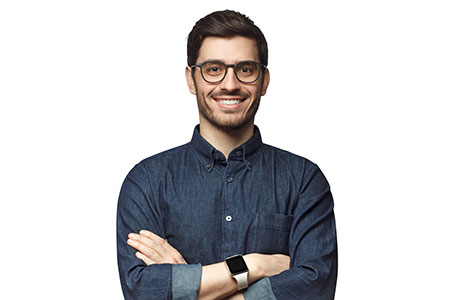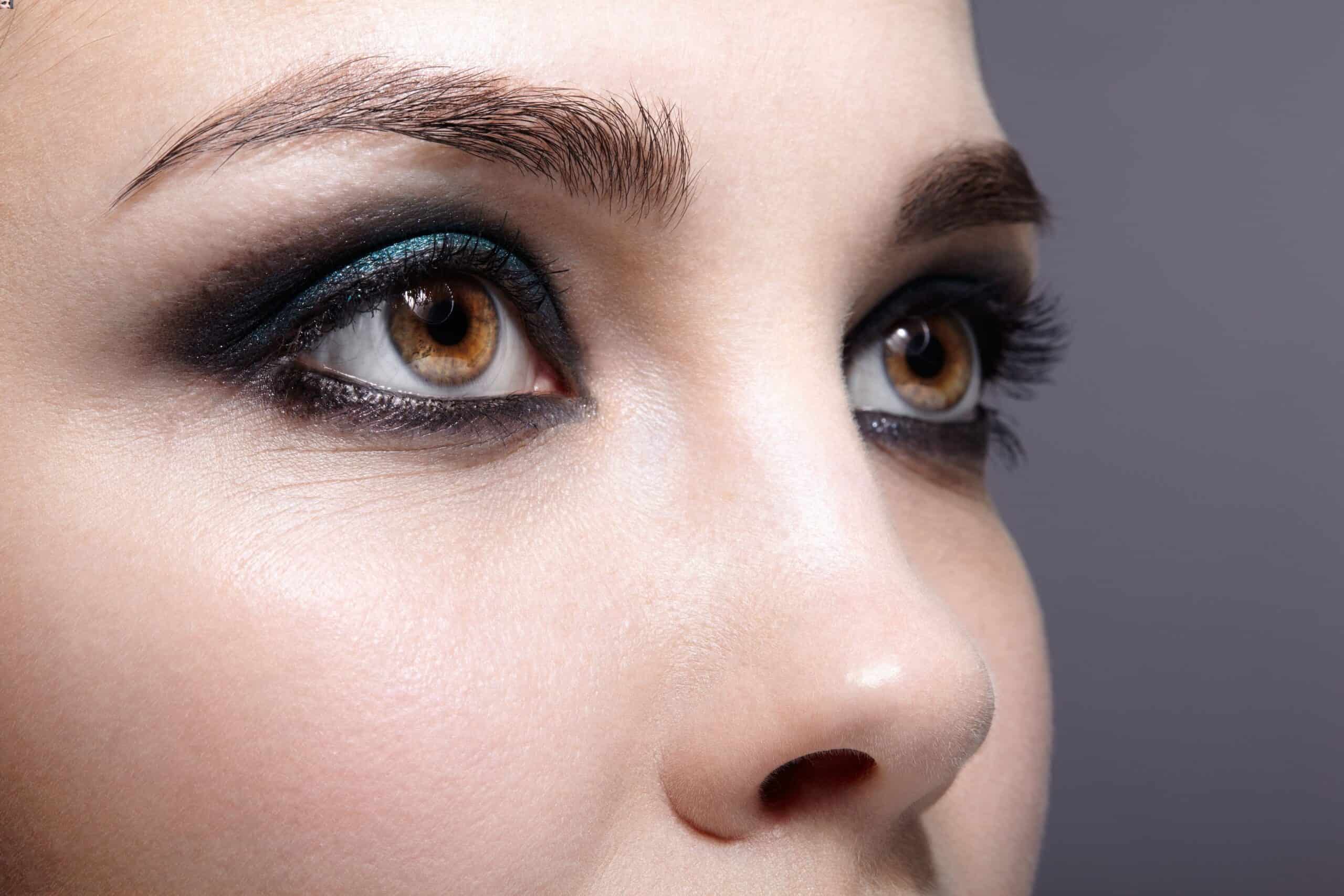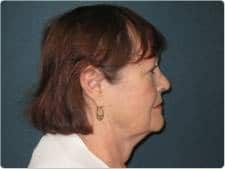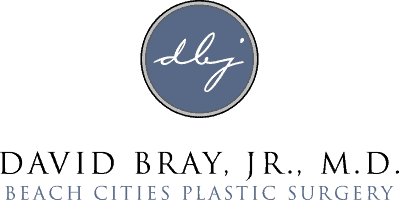Revision Rhinoplasty In Torrance, CA
Also serving Palos Verdes & Redondo Beach
Revision rhinoplasty surgery, also commonly referred to as nose correction surgery, is considered one of the most difficult surgeries performed by plastic surgeons and specialists. Patients may present for functional or aesthetic concerns.

When a patient decides to have rhinoplasty, he or she hopes the surgery will enhance the appearance, improve breathing, or both. However, the journey doesn’t always end after the first procedure. Whether due to aesthetic concerns, functional issues, or both, some patients find themselves considering a secondary procedure, known as revision rhinoplasty.
Revision rhinoplasty can be more complex than primary rhinoplasty. It involves correcting or improving the results of an earlier nose surgery. The procedure requires a surgeon with a deep understanding of nasal structure, an eye for aesthetics, and the skill to address both form and function. Dr. David Bray, Jr. brings a wealth of experience and a personalized approach to each case, offering hope and solutions to patients who were dissatisfied with their first surgery’s outcomes.
Common Concerns Addressed by Revision Rhinoplasty
Patients seek revision rhinoplasty for various reasons, including:
- Dissatisfaction with the aesthetic outcome of the first surgery
- Difficulty breathing caused by structural problems after the initial procedure
- Need for further refinement or correction of nasal shape
- Damage to the nose following a previous rhinoplasty

Technical Concerns of Revision Rhinoplasty
Nasal airway obstruction after a primary rhinoplasty surgery is likely the result of internal or external nasal valve collapse. Nasal dorsal hump reduction may result in an internal nasal valve collapse if the upper lateral cartilages are not adequately supported and maintained at the time of reduction. The patient may present with the appearance of an inverted V deformity along the nasal dorsum. During a rhinoplasty revision, the internal valve may be reconstructed with spreader grafts. Nasal bone osteotomies may also be necessary. A dorsal graft may be beneficial if the dorsum was over-resected at the first operation.
The patient may also develop airway obstruction form external nasal valve collapse. Some techniques used to narrow the nasal tip may lead to weakening of the nostril with resulting collapse and airway obstruction. Management generally involves lateral crural strut grafts. These are cartilage grafts placed under the remaining lower lateral cartilage and extending laterally into the nasal ala. This graft provides support to the nostril, reducing external nasal valve collapse.
Aesthetic concerns after primary rhinoplasty may involve all parts of the nose. Patients may present concerns regarding the height and shape of the dorsum. The nasal tip may be too wide or too narrow. The nasal tip may be over-projected or under-projected. The nasal tip may be over-rotated or under-rotated. The ultimate management will depend on the cosmetic concern.
Patients requiring nasal dorsal modification may require either a minor procedure to fix a small residual bump or an open approach with a more complex treatment of the cosmetic deformity. In some cases, cartilage grafts are needed and these grafts may be taken from the septum when available. In cases that do not have available nasal septum, ear or rib cartilage may be used. These cases may be more complex.
Nasal tip correction surgery frequently requires an open approach to assess the status of the nasal tip cartilages. In revision rhinoplasty surgery, much can be learned about the prior surgery once the nose is opened. Final decisions regarding the management of the nasal tip may be made once the tip is exposed. In some cases nasal tip suturing may help improve the nasal tip. However, in other cases the nasal tip may require a nasal tip graft to improve the tip shape.
The following is an example of a revision rhinoplasty surgery. This patient had a previous rhinoplasty that involved reduction of the nasal dorsum. Over time the patient noticed that her nasal airway was becoming more obstructed. She also developed an inverted V deformity of the nasal dorsum. Revision rhinoplasty specialist Dr. Bray, Jr. performed nose correction surgery with placement of spreader grafts and a diced cartilage and fascia dorsal graft to correct her deformity and airway.

What to Expect During Your Consultation
Your journey to a successful revision rhinoplasty begins with a consultation with Dr. Bray. During this meeting, he will:
- Review your medical history and previous rhinoplasty details
- Conduct a thorough examination of your nose
- Discuss your concerns and desired outcomes
- Explain the revision rhinoplasty process, including preparation, the procedure itself, and recovery
- Answer any questions you may have, ensuring you feel informed and confident about your decision
Revision Rhinoplasty Recovery and Results
Recovery from revision rhinoplasty is comparable to primary rhinoplasty, though individual experiences can vary based on the extent of the surgery and the patient’s healing process. Patients can expect swelling and bruising around the nose, especially in the first week. Many patients feel comfortable returning to work 10 to 14 days after surgery. Dr. Bray will schedule follow-up appointments to monitor the healing process.
Final results can take up to a year to fully materialize as the swelling subsides and the tissue settles.
Revision Rhinoplasty Costs
Each revision rhinoplasty that Dr. Bray performs is customized to the needs of the patient, with costs reflecting the differences in surgical plans. Revision rhinoplasty can cost more than primary rhinoplasty because of the highly specialized skills necessary to perform it successfully. A quote will be provided at the time of the consultation. In some cases where revision rhinoplasty is necessary to improve breathing, this surgery may be covered in part by insurance.
Why Patients Choose Dr. Bray for Revision Rhinoplasty
Dr. Bray is a triple board-certified plastic surgeon who is also a member of the prestigious Rhinoplasty Society. His precision and advanced techniques make him a top choice for revision rhinoplasty among patients in the Los Angeles, Torrance, Palos Verdes, Manhattan, Hermosa, and Redondo Beach area. Dr. Bray’s goal is to correct the previous surgery’s shortcomings while minimizing recovery time and discomfort.
To schedule a consultation, please call (310) 326-9400 today.






